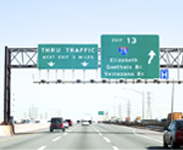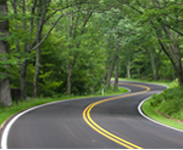Potholes and Other Road Hazards
Can you smell the spring air? The flowers are blooming, the air is getting warmer and riding season is in full effect! Everyone is itching to get their bikes out on the road and then you hear a big BANG! What just happened? A huge pothole is in the middle of your street. It wasn’t there last summer. Where did it come from?
This is just one example of a road hazard at the beginning of riding season. Throughout the harsh weather conditions of winter, roads take a lot of punishment. Water seeps into cracks and freezes, causing the gaps to become bigger and parts of the road to move. This creates large ruts in the road, especially between two sections of paved road. Plows that work nonstop to keep the roads clear of snow scrape the road. This can cause huge chunks of road to get caught in the plow and creates massive potholes.
Some people call the beginning of spring “pothole season”; they are not wrong.. Debris caught in a snow plow’s path is pushed to the side of the road. When the snow melts, rocks, salt and tree branches lay on the road causing more hazards for riders to deal with. Municipalities work vigorously to try and repair damaged roads, but sometimes repairs can be done hastily and improperly.
As always when the start of the riding season comes, you should make sure to go through the pre-ride check list. If you are unsure of all of the items to be checked, click HERE or watch our video about it HERE. Properly inflated tires are very important, especially when the tire has a shallow profile. Low profile tires have less rubber to absorb the shock of the road. A low profile tire hitting a large pothole cannot absorb the shock, which may cause a bent rim. Wax as much of the bike as you can to resist dirt and salt from the road. This will repel corrosion the best. Gravel and salt can cause traction issues, so dress appropriately.
On your first ride of the season, be extra alert. Remember, a pothole or hazard may be present as you ride out, even on your own street! On top of observing other motorists, you have to scan the road as well. Avoid potholes, dips and overfilled potholes by riding around them. Make sure no other motorists are in your path as you avoid a hazard. Manhole covers tend to have deteriorated edges from snow plowing. Ride around them as well. Ride closer to the center of the road and stay away from the sides where debris may have collected from the plows. Also, don’t forget to look out for large tree branches may extend into the street.

Potholes that are repaired hastily may be overfilled or under-filled. Overfilling can cause a hump in the road that can launch a motorcycle airborne. Under-filling still leaves a road hazard but may help soften the brunt of the impact. Be very aware of cracks that may have expanded in the road. This is prominent on highways because freezing water separates the road between two lanes. Since the lanes are sometimes paved at different times, they may have a space for ice to form. These ruts in the road may trap a narrow tire. If you are caught in a situation where you are stuck in a rut, remain calm and slowly try to exit the rut by gently turning the motorcycle away from the rut. This is easier if the road begins to curve and the motorcycle is kept straight.
Cracks in the road are filled with a tar which is very slippery. The paint used for lanes and road markings also may be separated from the road due to winter conditions. This can also cause slippery conditions for motorcycle riders.
Although conditions may be less than ideal for riding at the beginning of spring, a rider can travel the road safely with constant observation and preparation. Use these tips for a fun, safe ride and remember to always make sure your bike is properly registered and insured before you hit the road. Stay safe and ride with Rider!
This site and articles contained herein are provided for general informational purposes only and are not a substitute or intended as professional advice. Please be sure to refer to your owner’s manual or consult a mechanic for information specific to your motorcycle. The information contained on this site and articles contained herein are provided on an “as is” basis with no guarantees of completeness, accuracy, usefulness or timeliness and without any warranties of any kind whatsoever, express or implied. Rider Insurance Company and its affiliates (together, “Rider”) assume no responsibility for any errors or omissions in the content of this site and articles contained herein. Any action taken upon this information is strictly at your own risk and Rider will not be liable for any losses or damages in connection with your use of this site and articles. Additional terms and conditions apply and are available at https://www.rider.com/plymouth-rock-assurance-general-terms-and-conditions/.





